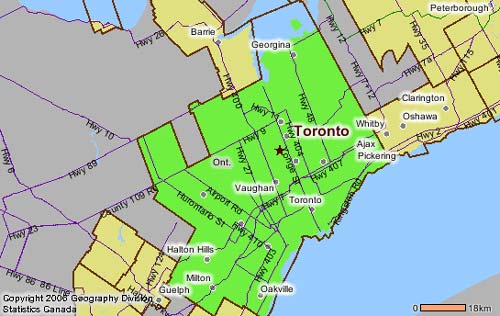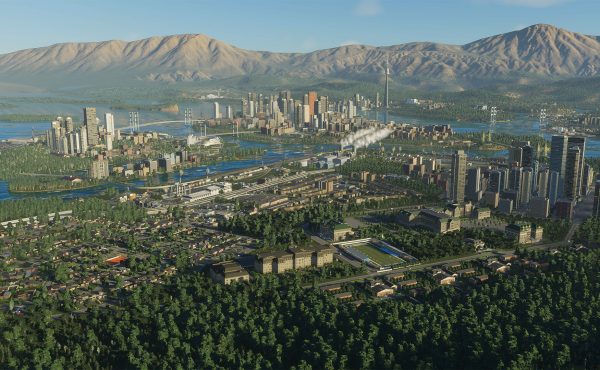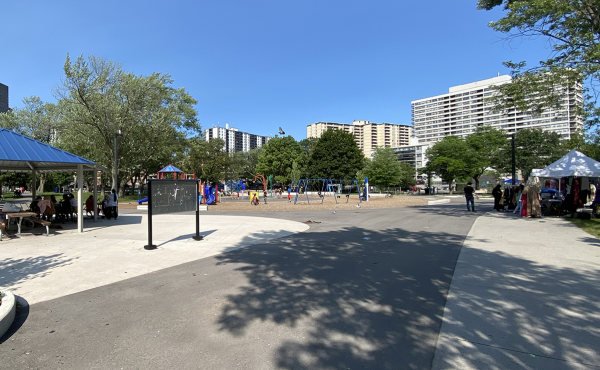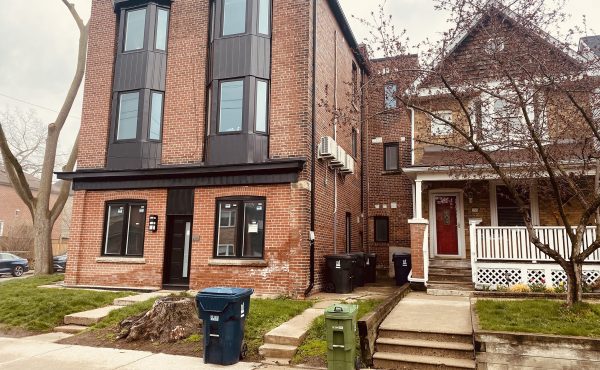
Statistics Canada has started to release data from the 2006 census at the City level – including population figures for Toronto and the GTA (or at least the Toronto Census Metropolitan Area (CMA), mapped above). By this measure, the GTA has grown 9.2% since 2001, with a population of 5,113,149 – that’s an increase in population of 430,252 in five years. The City of Toronto itself accounted for only 21,787 of this increase (with a very modest growth rate of 0.9%, and despite what most of us would think of as a significant high-density condo boom) which gives you an idea of the massive pressure on land development at the edges of the city.
To put that in perspective, the increase is equivalent to adding the entire Kitchener CMA (which includes Kitchener-Waterloo and Cambridge)(451,235), or the entire London (ON) CMA (457,720) to the GTA in the last five years. That’s very nearly the entire population of Newfoundland and Labrador (505,469), and eerily near the population of the City (not CMA) of Vancouver (578,041).
This only emphasizes the critical importance of GTA-wide planning along the lines of the Places to Grow work being done by the Province, but also makes one wonder where this type of planning was 10 or 20 years ago when we really needed it. If this kind of growth keeps up, the Provincial target to have 40% of new residential units inside the current urban boundaries is going to be a real challenge.
crossposted to bricoleurbanism.org




13 comments
I think you need to also look at the data about the number of dwelling units before pronouncing about the condo boon.
Although the overall growth rate for the city of Toronto may have been less than 1%, if you take a closer look within the city itself, there are definite high-growth hotspots, as the following Statistics Canada PDF map (a verson of which is also in today’s Toronto print edition of The Globe and Mail) shows:
The western waterfront, the Bloor/Yonge neighbourhood and North York, particularly along Sheppard, for a few examples, are areas all showing growth of over 10%. I suspect that growth is some of these hotspots can be attributed to the condo boom.
Hmm. Let me try posting that link again:
StatsCan Toronto Growth Map
ok Grace,
According to the 2001 census there were 965,554 private dwellings in the City of Toronto – the 2006 census shows 1,040,597 private dwellings. That’s an increase of 75,043 dwellings in five years – far outstripping the City’s population growth of 21,787. A condo boom? Yes, I think so.
The condo boom is mitigated by loss in population in places like the Davenport riding, in Etobicoke North, and in parts of Scarborough. Toronto’s within-city-limit subirbs are dying. What the city really needs is a “New Suburbanism”, to bring families and upwardly mobile immigrants back to the city, instead of moving to Barrie, Oshawa, and Vaughan.
Also what David Vereschagin pointed out when you look at the map; some of the areas with the largest decline in population are Parkdale and Leslieville. As houses that once housed several families or renters are now filled with two, and perhaps a small dog, the population of these areas declines rapidly. But at least there are starbucks.
Yeah, the 0.9% surprised me too given all those condos. If you look at the map of census tracts within Toronto (1.3 MB PDF), the interesting thing is that most of the city shows population loss of 0-10%, with a few areas more than 10%. Meanwhile, the condo districts show growth, many over 10%.
I wonder if this is partly an empty-nester phenomenon — in older neighbourhoods, a house that used to hold a whole family is now just home to a couple in their 50s. Their kids have moved to condos downtown — meaning the family’s gone from one dwelling unit to two or three, but a net population change of zero.
Thank you for highlighting the importance of the GTA wide planning. I read this morning of reporters bemoaning the relative growth of Toronto vis a vis the rest of the region. This isn’t time to be only concerned about our respective feifdoms or dutchies. It’s time to plan regionally.
Transit (both focused on Toronto downtown and inter-regional), infrastructure and health care sharing are only some of the issues to worry about. Unfortunately we will wind up with a lot of short-sighted political funding to solve these issues (witness the Vaughan subway for example).
There needs to be action now, before people start resorting to commuting from North Bay.
for those of you who dislike pdfs, I’m attaching the map David was referring to above.
Ummm who do you think are buying all these condos?? FYI: it’s not locales.
Either way the 40% intensification target issue in Places to Grow is going to be a serious problem. Some municipalities may have to tear up existing infrastructure to accomodate this target before expanding their urban boundary.
The average lot size for low density housing in the GTA is one of the lowest in North America. The number one housing preference will always be the single family house and 10 years from now that housing preference will not be an option for many. Lack of land = higher land prices = expensive housing. There are a lot of moving parts and with these population figures, 10 years from now will be a very interesting time in the GTA.
The issue of 50s and 60s neighbourhoods experiencing depopulation is not limited to Toronto. Southern Missisagua and Oakville as well as large sections of Brampton are showing the same trend. The next census may show more of the same.
BTW, if Ä° live in a town that has 10 people and it grows by 10 people it will register as 100% growth…a town of 1000 people that grows by 10 people shows only 2% but it is still the same number of people.
There seem to be a lot of high-end condos under construction, but there aren’t enough lower-end apartments and condos being built because they are less profitable. The developers ought to build more to keep lower and middle class residents from moving to Oshawa and Hamilton.
bloo that’s true,
Milton grew by 71.4% to 53,939 but added about the same amount of population as Toronto which grew at 0.9%, so yes, percentage figures should be taken with a grain of salt.
On the other hand, Brampton alone grew by almost as much population (108,378) as the entire Vancouver CMA (including all of the suburbs) which grew by 129,616 – now that’s just messed up.
With that kind of growth it’s not overly surprising that the overall atmosphere of newer development around the GTA tends to be repetitive and banal, and the quality of the planning horrendously conventional.